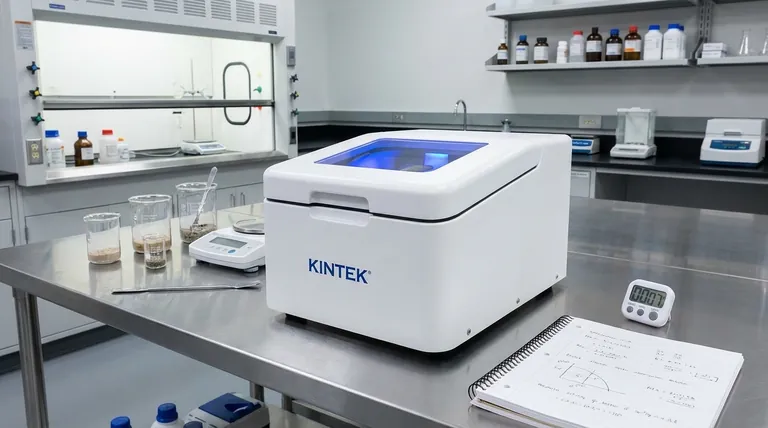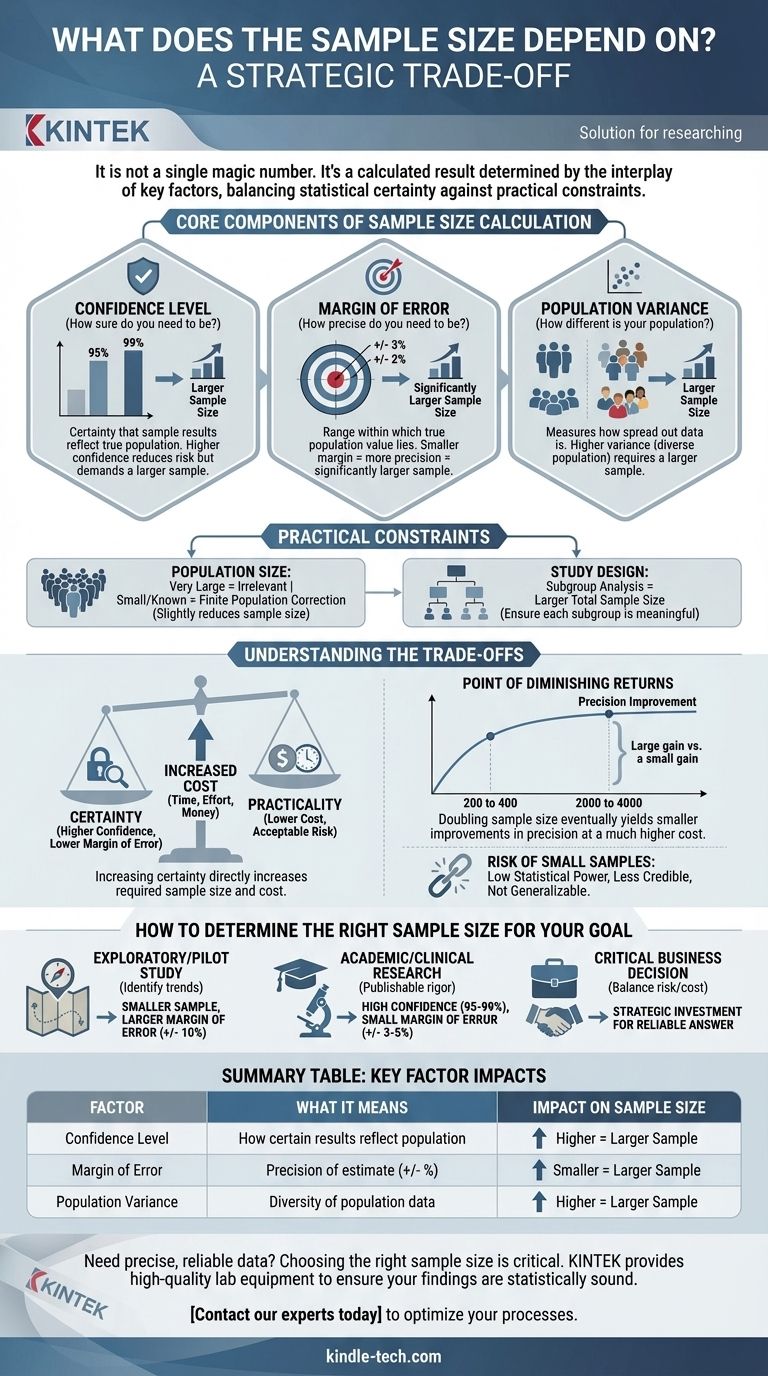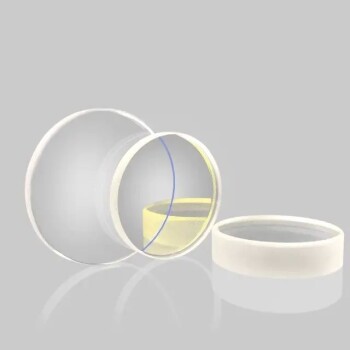To be clear, your required sample size is not a single magic number. It is a calculated result determined by the interplay between your desired level of precision, your tolerance for risk, and the inherent variability of the population you are studying. The three primary factors you must define are your margin of error, confidence level, and the expected population variance.
The core takeaway is that choosing a sample size is a strategic trade-off. You are balancing the need for statistical certainty (precision and confidence) against the practical constraints of your resources, such as time and budget.

The Core Components of Sample Size Calculation
To determine the appropriate sample size, you must first define the parameters of your research. Each of the following components directly influences the final calculation.
Confidence Level (How sure do you need to be?)
The confidence level tells you how certain you can be that your sample results reflect the true population. It's typically expressed as a percentage, like 95% or 99%.
A 95% confidence level means that if you were to repeat the study 100 times, you would expect the results to fall within your calculated range 95 of those times.
Higher confidence levels reduce the risk of being wrong but demand a larger sample size. This is the price you pay for greater certainty in your findings.
Margin of Error (How precise do you need to be?)
The margin of error defines the range within which you expect the true population value to lie. It’s the "+/-" value you often see in poll results (e.g., "45% of voters, with a margin of error of +/- 3%").
A smaller margin of error, like +/- 2%, indicates a more precise estimate. However, achieving this higher level of precision requires a significantly larger sample size.
Deciding on your margin of error involves thinking about the consequences of being wrong. For critical decisions, a smaller margin of error is essential.
Population Variance (How different is your population?)
Population variance (or standard deviation) measures how spread out the data is. In simple terms, it reflects how similar or different the individuals in your population are from each other.
If your population is very uniform (low variance), a smaller sample can accurately represent it. If your population is highly diverse with wide-ranging opinions or characteristics (high variance), you need a larger sample to capture that diversity.
Since you rarely know the true variance beforehand, statisticians often use a conservative estimate (p=0.5) to ensure the sample is large enough.
The Influence of Practical Constraints
Beyond the core statistical principles, real-world factors also shape your final sample size.
Population Size (Does it always matter?)
For very large populations (e.g., the entire population of a country), the total size becomes irrelevant. The sample size formula stabilizes, and the number you need doesn't change whether the population is 1 million or 100 million.
However, if you are studying a small, known population (e.g., all employees at a specific company), you can apply a Finite Population Correction. This may slightly reduce the required sample size.
Study Design and Complexity
The way you design your study matters. If you plan to analyze subgroups within your sample (e.g., comparing responses from different age groups), you need to ensure the sample size for each subgroup is large enough to be meaningful.
This often means your total required sample size must be larger than if you were only looking at the population as a whole.
Understanding the Trade-offs
Choosing a sample size is an exercise in managing competing priorities. Understanding the inherent trade-offs is critical for making an informed decision.
The Cost of Certainty
There is a direct relationship between certainty and cost. Increasing your confidence level and decreasing your margin of error will always increase the required sample size, which in turn increases the time, effort, and money needed for your study.
The Risk of Small Samples
Using a sample that is too small is a major pitfall. It leads to low statistical power, meaning you might fail to detect a real effect or difference that actually exists.
Furthermore, results from undersized samples are less credible and may not be generalizable to your population, undermining the entire purpose of the research.
The Point of Diminishing Returns
It's crucial to recognize that there is a point of diminishing returns. Doubling your sample size from 200 to 400 might cut your margin of error significantly. However, doubling it again from 2,000 to 4,000 will yield a much smaller improvement in precision, at a much higher cost.
How to Determine the Right Sample Size for Your Goal
Your choice should be guided by the specific goal of your research.
- If your primary focus is exploratory research or a pilot study: A smaller sample with a larger margin of error (e.g., +/- 10%) is often acceptable to identify general trends and inform future research.
- If your primary focus is academic or clinical research: You must prioritize rigor with a high confidence level (95% or 99%) and a small margin of error (e.g., +/- 3-5%) to ensure your findings are robust and publishable.
- If your primary focus is a critical business decision: You must balance the cost of the research against the financial risk of making a wrong decision based on imprecise data.
Ultimately, choosing the right sample size is about strategically investing your resources to get the most reliable answer to your most important question.
Summary Table:
| Factor | What It Means | Impact on Sample Size |
|---|---|---|
| Confidence Level | How certain you are that results reflect the population | Higher confidence = Larger sample |
| Margin of Error | The precision of your estimate (e.g., +/- 3%) | Smaller margin = Larger sample |
| Population Variance | How diverse or similar your population is | Higher variance = Larger sample |
Need precise, reliable data for your research or quality control?
Choosing the right sample size is critical for valid results, whether you're conducting academic studies, market research, or material testing. At KINTEK, we understand that your laboratory's success depends on accurate data. We specialize in providing the high-quality lab equipment and consumables you need to execute your research flawlessly.
Let us help you optimize your processes. Contact our experts today to discuss how our solutions can support your specific laboratory needs and ensure your findings are statistically sound.
Visual Guide

Related Products
- Lab Vibration Mill
- Laboratory Wet Three-Dimensional Vibratory Sieve Shaker Machine
- Laboratory Test Sieves and Vibratory Sieve Shaker Machine
- Laboratory Micro Tissue Grinding Mill Grinder
- Laboratory Disc Cup Vibratory Mill for Sample Grinding
People Also Ask
- How does particle size affect XRF? Achieve Accurate and Repeatable Elemental Analysis
- What is the difference between grinding and pulverizing? Achieve the Perfect Particle Size for Your Application
- Why is sample preparation important in analysis? Ensure Accurate and Reproducible Results
- How does sample size affect analysis? Maximize the Reliability of Your Research
- What is the speed range of a ball mill? Find Your Optimal Grinding Efficiency

















